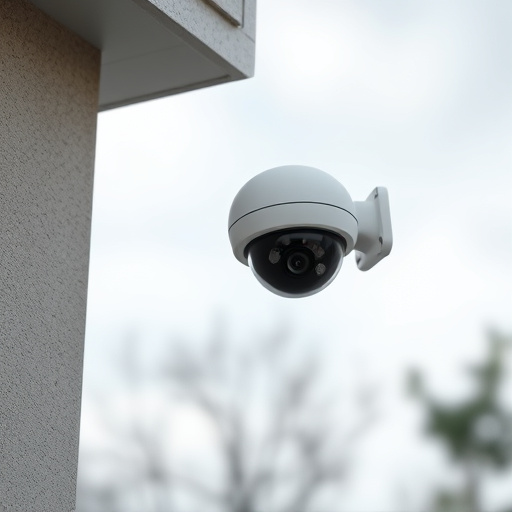Strategic outdoor dummy camera installation involves choosing visible locations near entry points with good lighting and minimal obstructions, securing mounts, configuring settings for motion detection and audio, discreet placement blending with surroundings, and a structured evaluation process measuring criminal activity changes through controlled observation and comparative analysis to ensure effective deterrence.
“Enhance community safety and deter criminal activity with outdoor dummy camera installations. This study investigates the effectiveness of dummy cameras in reducing crime rates, focusing on practical implementation strategies outlined in our comprehensive guide. We explore evaluation methods to assess their deterrent impact, offering insights into how these devices contribute to public security. By understanding the step-by-step outdoor dummy camera installation process, you’ll be equipped to implement this technology for a safer environment.”
- Outdoor Dummy Camera Installation Guide
- Evaluating Deterrent Effectiveness Methods
- Impact on Crime Rates & Community Safety
Outdoor Dummy Camera Installation Guide
Setting up an outdoor dummy camera is a straightforward process that can significantly enhance security and deter potential intruders. Here’s a simple guide to help you install your dummy camera effectively:
1. Choose the Right Location: Select a strategic spot for optimal visibility, typically near entry points like doors or windows. Ensure it’s placed high enough to avoid obstructions from trees or buildings, allowing for clear line-of-sight across the area you wish to secure. Consider factors such as lighting and proximity to potential hiding places to maximize deterrent effect.
2. Secure Mounting: Use sturdy brackets or mounts to fix the dummy camera firmly to a structure, fence post, or pole. Ensure the mounting hardware is suitable for withstanding various weather conditions, including heavy winds and rain. Properly securing the camera will make it more convincing as a surveillance device, thereby deterring criminals.
3. Connect and Configure: Plug in the camera and follow the manufacturer’s instructions to configure its settings. This might include setting up motion detection sensitivity, defining trigger zones, and ensuring clear audio functionality. Adjusting these parameters allows you to customize the camera’s response to potential threats, making it an effective deterrent even without live video feed.
4. Discreet Placement: While the goal is to show off the dummy camera’s presence, excessive brightness or obvious positioning can alert intruders. Position the camera discretely, ensuring its lighting blendss seamlessly with surrounding ambient light. Camouflage options, such as weatherproof cases or mounting it behind cover, can further enhance its secrecy and deterrence.
Evaluating Deterrent Effectiveness Methods
Evaluating the effectiveness of a dummy camera as a deterrent involves a multi-step process, crucial for understanding its impact on crime prevention in both residential and commercial areas. The initial stage includes meticulous planning and preparation for the outdoor dummy camera installation. This entails strategically placing the cameras at key locations, ensuring they are visible to deter potential intruders while adhering to privacy regulations. Once installed, a controlled observation period is initiated, during which researchers or security personnel monitor the area, recording any notable changes in criminal activity.
Comparative analysis between areas with dummy cameras and those without forms the backbone of this study. By comparing crime rates, frequency, and types, researchers can ascertain the deterrent effect. Positive outcomes could lead to further exploration of dummy camera deployment as a cost-effective, non-intrusive security measure. Conversely, ineffective results prompt a reevaluation of installation techniques, camera positioning, and local crime patterns to enhance future deterrence strategies.
Impact on Crime Rates & Community Safety
The installation of outdoor dummy cameras has shown promising results in reducing crime rates and enhancing community safety. Research indicates that visible surveillance deterrents, like dummy cameras, can significantly decrease incidents of theft, vandalism, and other petty crimes. By strategically placing these decoys in high-risk areas, communities can create a perception of increased watchfulness, thereby discouraging potential criminals.
This strategy has been particularly effective in residential neighborhoods, business districts, and public spaces where crime rates had previously been high. The simple act of installing dummy cameras often leads to a drop in actual criminal activity as word spreads among offenders about the heightened security measures. This, in turn, promotes a safer environment for residents and businesses alike, fostering a sense of security and well-being within the community.
This study has demonstrated that strategically placed outdoor dummy cameras can significantly enhance community safety and deter criminal activity. By following the comprehensive Outdoor Dummy Camera Installation Guide, law enforcement and community leaders can effectively deploy these devices as a powerful tool in their crime prevention arsenal. The evaluation methods outlined ensure the deterrent effectiveness of these cameras, making them a cost-efficient and reliable solution to maintain order and safeguard public spaces.
